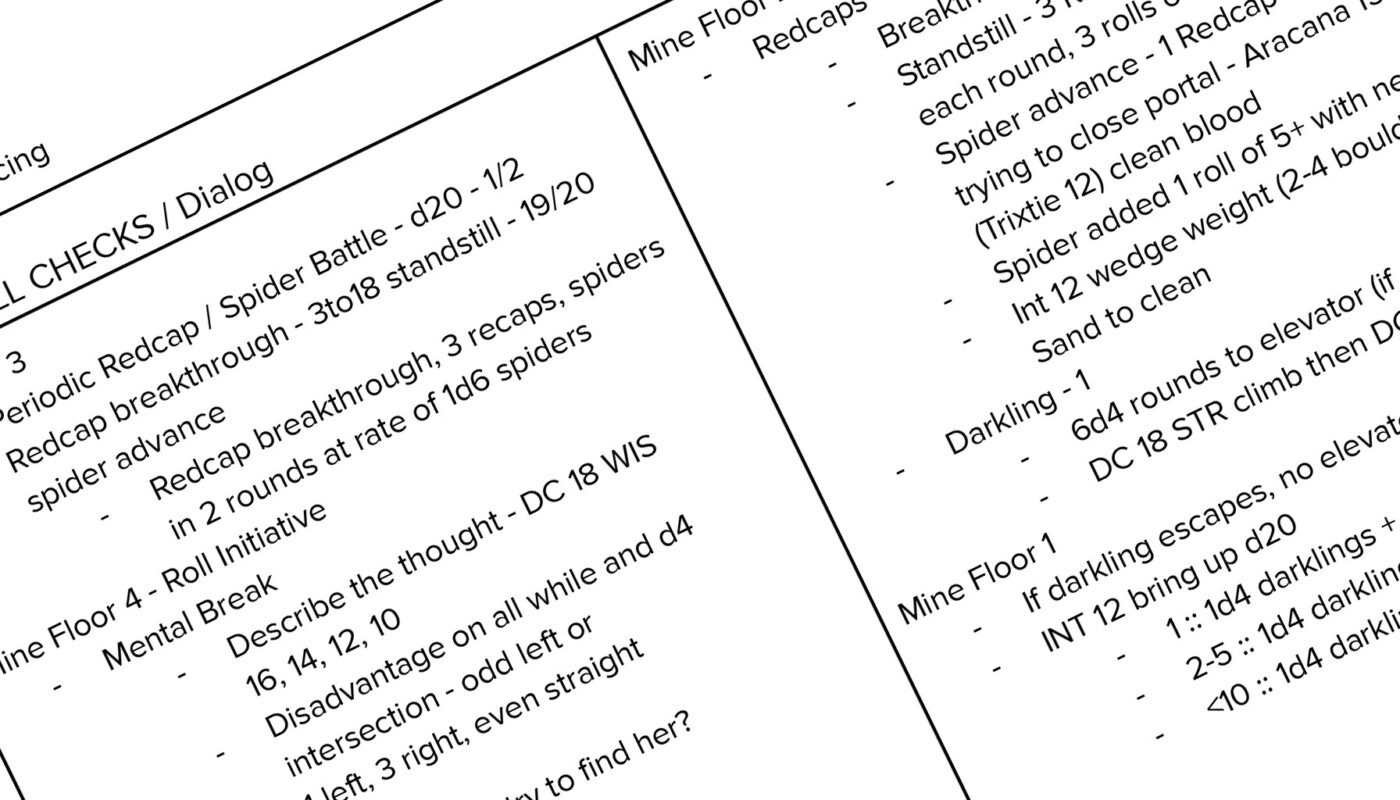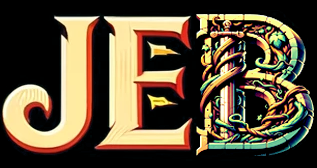When I decided to start DMing, I wanted to build my own homebrew into the lore of the Forgotten Realms. I honestly had never run a true campaign or module. Thankful I’m not alone in this. In an interview with Matt Mercer, he shared a similar background, only discovering modules later in his DM life.
I dig quickly realize, though, that I needed some structure. That’s when I came across this beauty of a DND session planning document. I can’t remember the article or videothat lead me to it (so if you know, please shoot us a message and I’ll update it here). But this document was a great start for me.
Essentially it got me thinking about the campaign on a session by session basis. I was still tracking my longer, bigger story I wanted to tell, but this kind of planning helped me to be both structured enough to move the story along and flexible enough to let the players do what they do.

I’ve since condensed this a bit in order to fit the entire season on one sheet. This is a rough template of what I use now and this is my process each week.
- I start by recapping the last session. I’m currently working with a ChatGPT instance where I type my summaries into. I let myself type as much detail as possible for the ChatGPT and then I trim it down to less than a page. Often times, this will inspire a title for the next session. The title seems to help set the stage.
- At the end of the summary, I choose the opening scene. This helps set the tone for the session and helps me understand location and direction.
- I then start to set the high-level where and who. The version of this planning document I use for myself (below) has a quick Where and Who section at the top. I fill it in with all the locations I can think they may visit and people they will interact with.
- After that, I dig into each location. I’ll create a bulleted list for each location to include: expected dialog, key items, plot devices, and rolls.
- This process becomes iterative. I’ll think of new locations, or how each location connects, or motivations of people or events.
- Finally on the last page, I create a battle NPC cheat sheet. I use my laptop to keep track of NPCs and their health.
Download the Planner
You can also download this sample version of a real session:
- Page One
- Session number and title
- In-game date (we are in the Feywild, so date is unknown, but I track date to interact with the lore timeline)
- Summary with BIG SETTING SENTENCE
- Page Two
- Locations – in this one we were in a mine that went down 4 floors
- Who’s There – Friendly and enemy NPCs
- CLUES / SKILL CHECKS / DIALOG – Various notes about what to expect. In this one, I had a mechanic where the spiders were holding the Redcaps coming out of a portal. Each round I would roll a d20.
- On a 1 or 2, the Redcaps breakthrough and the party will encounter 3 recaps
- On a 3-18, it’s a standstill
- On a 19 or 20, the spiders advance, clearing the floor
- Page Three
- NPC List – this was a very active mine, so I had the various NPCs and about how many I would be putting in an encounter
- For each, I labeled them (A, B, C, etc.) so players could call out attacks.
- Each one lists the AC in parenthesis, max hit points, and a place after the slash to track current hit points.
- I would also have a link to their stat block (I would usually have the stats open in other tabs for quick reference.
So I know it seems like a lot, but once I got into the groove, it’s been a pretty efficient process. If you’d like to see a video of this, maybe drop us a line.
